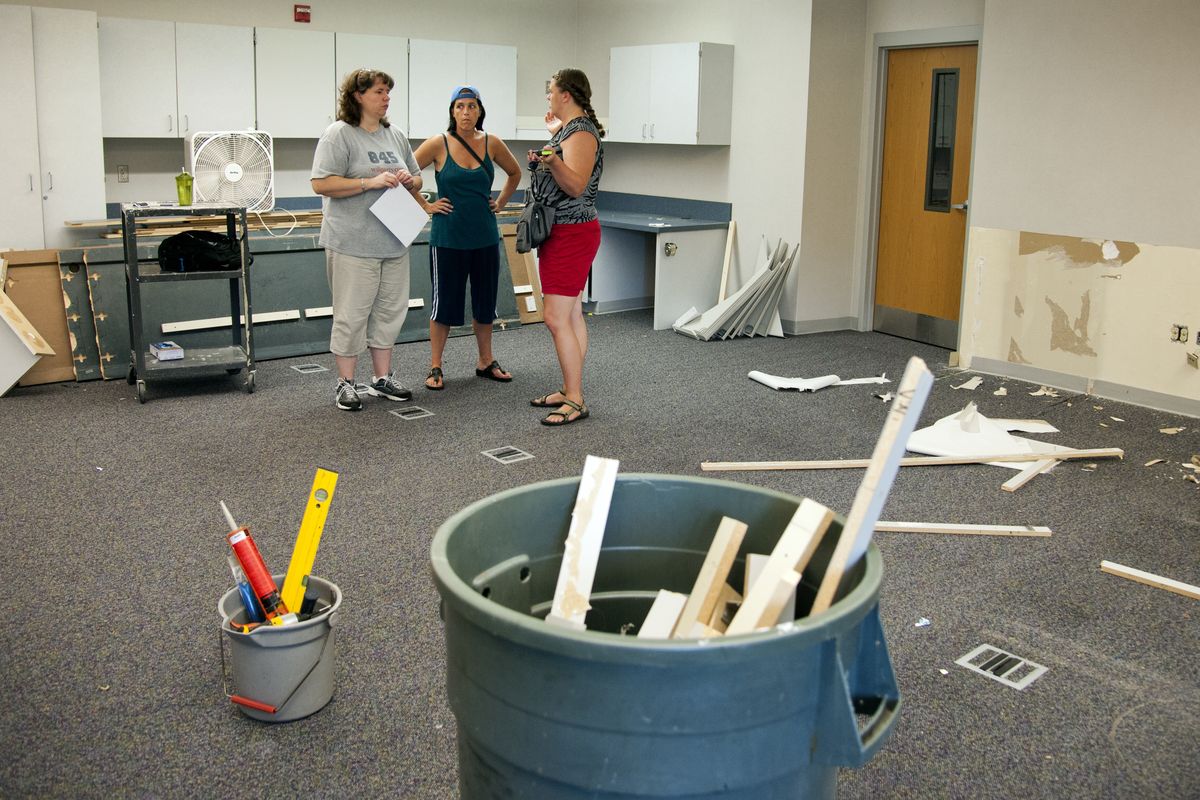Schools scrambling to meet new kindergarten mandate
Full-day classes will require new teachers, more classrooms

Kindergarten teachers are hired, crews are delivering desks and bookcases, and computer labs and other school spaces are being transformed into classrooms.
Statewide, twice as many children will be in state-paid, full-day kindergarten next month, a result of a $50 million investment by the Legislature to help meet a Washington Supreme Court mandate to fund basic education.
While educators and parents are thrilled about the option for children, the logistics can be complicated.
Central Valley School District – already brimming with students and with no money to build or renovate since 2005 – will have free full-day kindergarten at six of its elementary schools.
The district has hired five new teachers, ordered five portable buildings with two classrooms each and is turning areas such as community rooms and computer labs into classrooms.
Adams Elementary had to create two new classroom spaces and is waiting for a portable for its third-graders who will need a different classroom space.
“We’ll be full here at Adams,” said Principal Jeff DuFresne.
The portable classrooms won’t be ready to go until October due to the late budget decision by the Legislature, district officials said. Meanwhile, some older students will be pushed out of classroom spaces and have to take lessons on an auditorium stage or in the gymnasium.
Adams Elementary disbanded its computer lab to create one of the classrooms and is trying to come up with some type of mobile computer lab, DuFresne said.
Two main reasons why the district is having difficulty accommodating students are steady growth and the inability to pass a bond since 1998, said district spokeswoman Melanie Rose.
Enrollment has grown by about a half-percent a year since the Great Recession hit, then grew by 2.5 percent last year, Rose said. “If that happens again – oh my,” she said.
Mead School District had to create classroom space at Shiloh Hills Elementary School, the only school that qualified for the state funding. The new money is being distributed according to poverty rates, so schools with the most students who qualify for free or reduced-price lunches are the first to get money.
“We are opening up two or three sections, basically doubling the kindergarten size,” said Superintendent Tom Rockefeller. “We’ve had to expand classrooms and do work in areas that were empty.”
The announcement of the kindergarten option has garnered interest from parents throughout the district, he said.
The district has started a waiting list. If there is enough demand, officials are considering adding a one or two more classes at other schools, most likely on the district’s north side.
Spokane Public Schools has a slightly different story.
School board members had expressed an interest late last year in offering full-day kindergarten at every elementary school, so administrators began planning in January, said Assistant Superintendent Mark Anderson.
The district considered space, technology and the amount of furniture needed. “When the district gave us the green light we were ready to go,” he said.
The district has hired 19 new teachers and estimates full-day kindergarten could boost enrollment by as much as 550 students. Starting this week, 340 tables, chairs to go with them and bookcases are being delivered to elementary schools.
Some music and art rooms have been converted into kindergarten classrooms, Anderson said. At many of the newly built elementary schools, more classroom space was added to account for increased enrollment.
Said Anderson, “We’re packed now, though.”
The Associated Press contributed to this story.